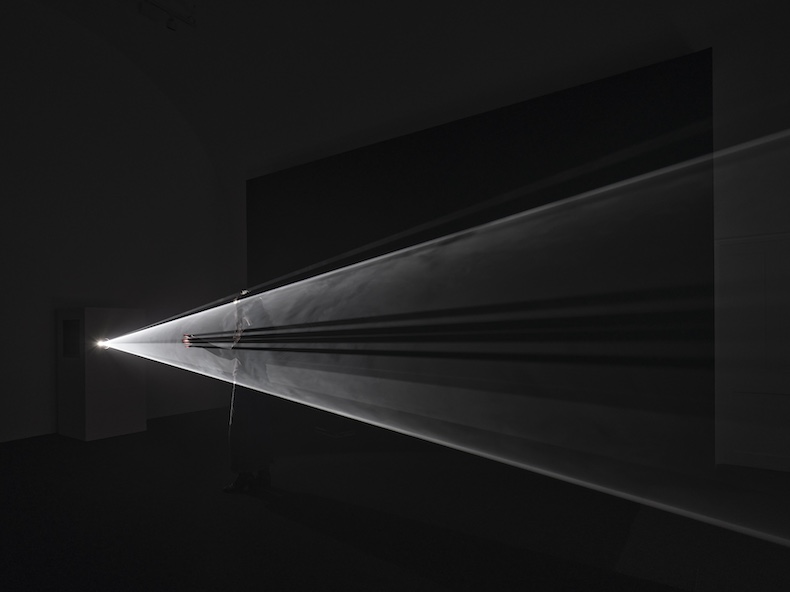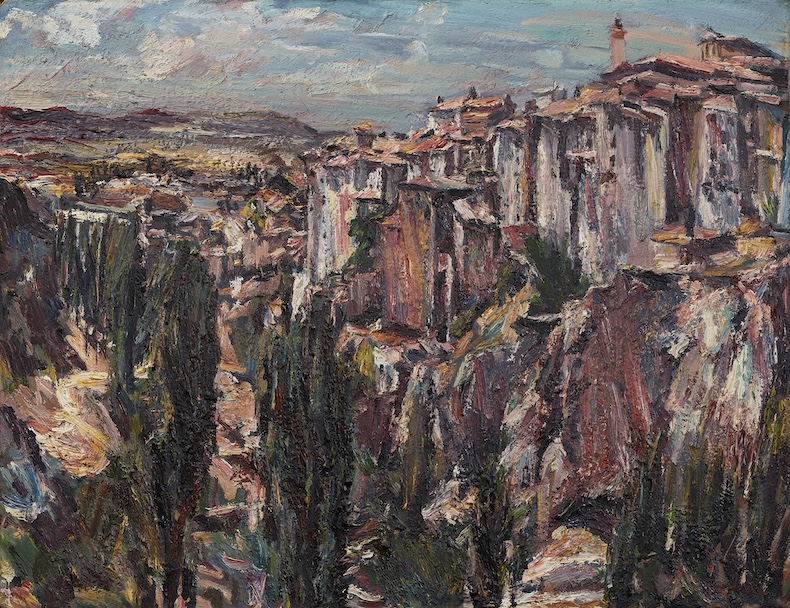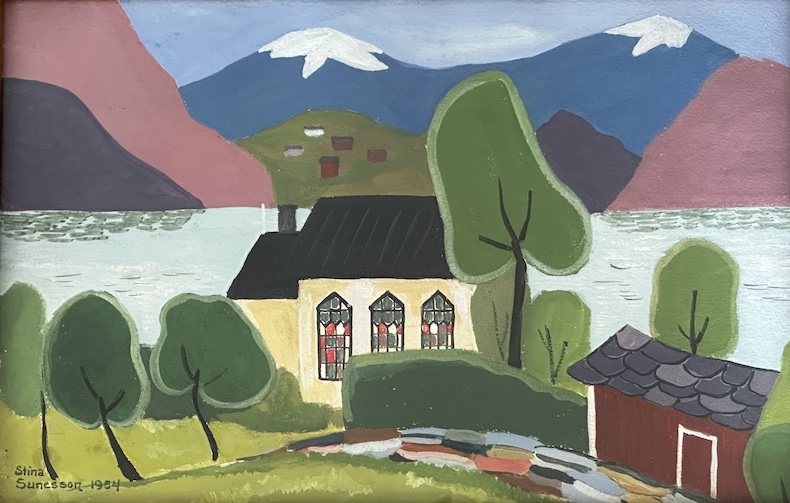With hundreds of exhibitions and events vying for attention in London during Frieze week, Apollo’s editors pick out the shows they don’t want to miss
It is apt that the Barbican – a home for art, film, theatre, music, design, literature and more – should be putting on Pamela Phatsimo Sunstrum’s first major UK show, ‘It Will End in Tears’ (until 5 January), since the Motswana artist draws on all of those art forms and more in her atmospheric exhibition. Sunstrum has transformed the Curve gallery into a wooden walkway that recalls a series of sparse theatre sets or dioramas. As you walk along the length of the gallery, her paintings – done on slabs of wood, the grain of which is visible behind the faint coats of paint – coalesce into a kind of loose, enigmatic narrative: a central woman figure recurs in various domestic settings, as well as in scenes that look like stills or storyboards from a film noir.
Installation view of ‘Anthony McCall: Raised Voices’ at Sprüth Magers, London, in 2024. Photo: Ben Westoby; courtesy the artist and Sprüth Magers; © the artist

Anthony McCall was making immersive art a long time before it was cool. His solid light works, which he began producing in the early 1970s, comprise various arrangements of projectors shining beams of light onto screens; in the haze-filled rooms in which his exhibitions take place, these beams mingle with the airborne particles and give the uncanny impression of light as something with substance and density. Crucially, McCall’s works allow, or rather actively invite, visitors to walk among and within the installation, severing and bending the shards of light, being surrounded and intoxicated by the warm fog and ultimately becoming part of the work itself. McCall currently has exhibitions at Tate Modern (until 27 April 2025) and the Guggenheim Bilbao (until 11 October); Sprüth Magers is hosting a cosier display at its London gallery, debuting a recent solid light work, Raised Voices (until 21 December).
East Valley, Cuenca (1934), David Bomberg. Courtesy Daniel Katz Gallery

Daniel Katz Gallery has extended until 18 October its exhibition ‘Bomberg/Auerbach’ – a remarkable pairing of two artists, David Bomberg and Frank Auerbach, who met in the late 1940s when the former taught the latter at Borough Polytechnic. Seen side by side, the influence of Bomberg on Auerbach becomes clear: the brushstrokes of both artists lend their paintings a tangible dynamism, even when depicting still scenes such as the mountains of Cuenca and Toledo (Bomberg) or the leafy landscape of London’s Primrose Hill (Auerbach). Both artists, too, used paint freely, layering it on so thickly that it becomes a three-dimensional, textured substance which, seen up close, is exhilarating and sinister in equal measure.
On the shore of Lake Siljan, Dalarna, Sweden (1954), Stina Sunesson. Courtesy Cadogan Fine Arts

Away from Mayfair and the bustle of London’s commercial gallery scene, Burgh House in Hampstead is hosting a display of some 25 paintings, etchings and sculptures by Nordic artists from the 19th and 20th century – many of them little known outside the Nordic countries (until 13 October). Organised by Cadogan Fine Arts, ‘Nature and Landscape in the North’ comprises a number of works from the collection of Christina Cadogan in addition to loans. Highlights include Stina Sunesson’s folk-art-esque gouache of lake Siljan in Sweden and an aluminium sculpture by Steinunn Thorarinsdottir that sits on a base made from Icelandic lava rock. Perhaps the crowning glory is a series of etchings by the Finnish artist Hugo Simberg, in whose work death is a constant – if often friendly – figure.


